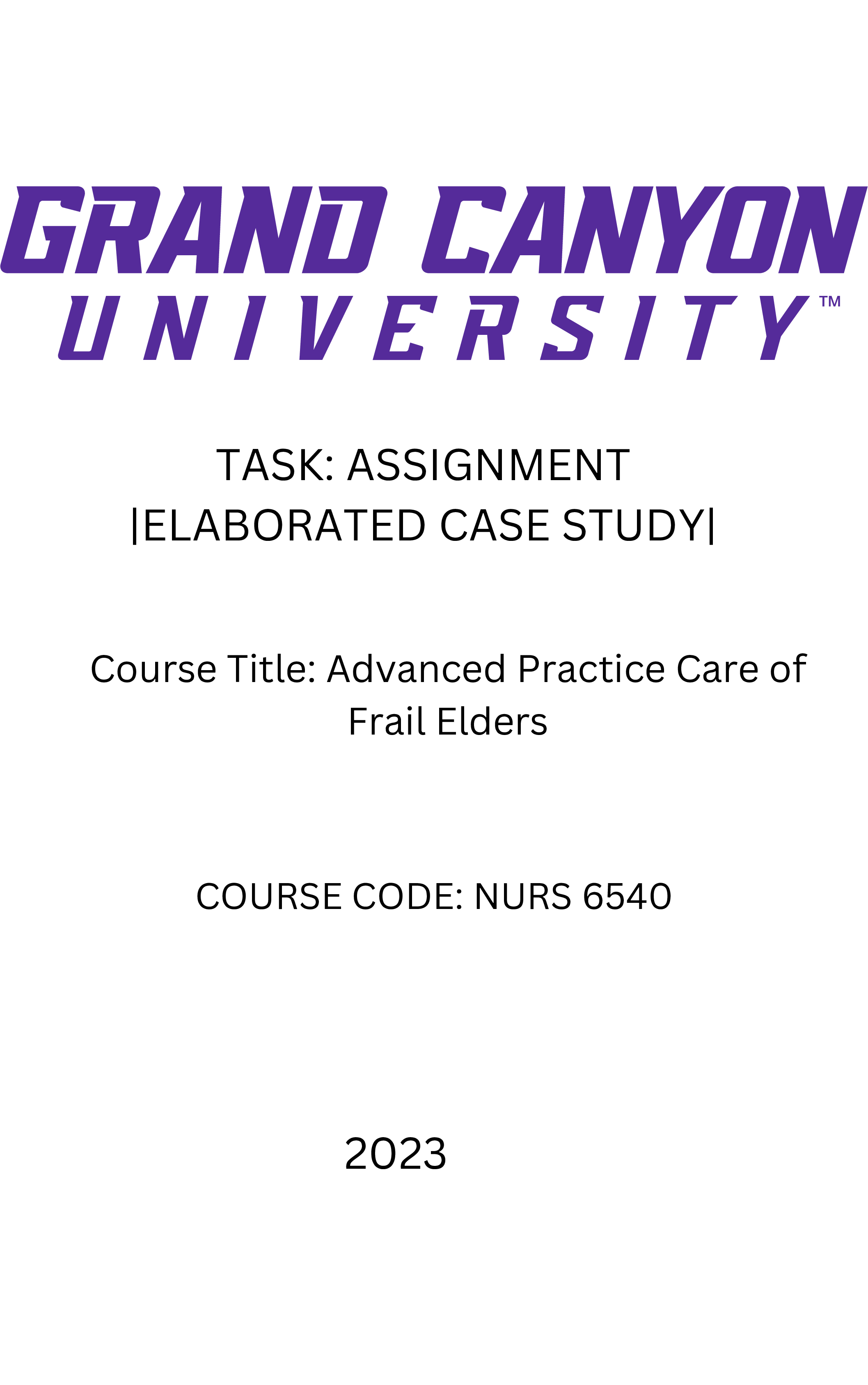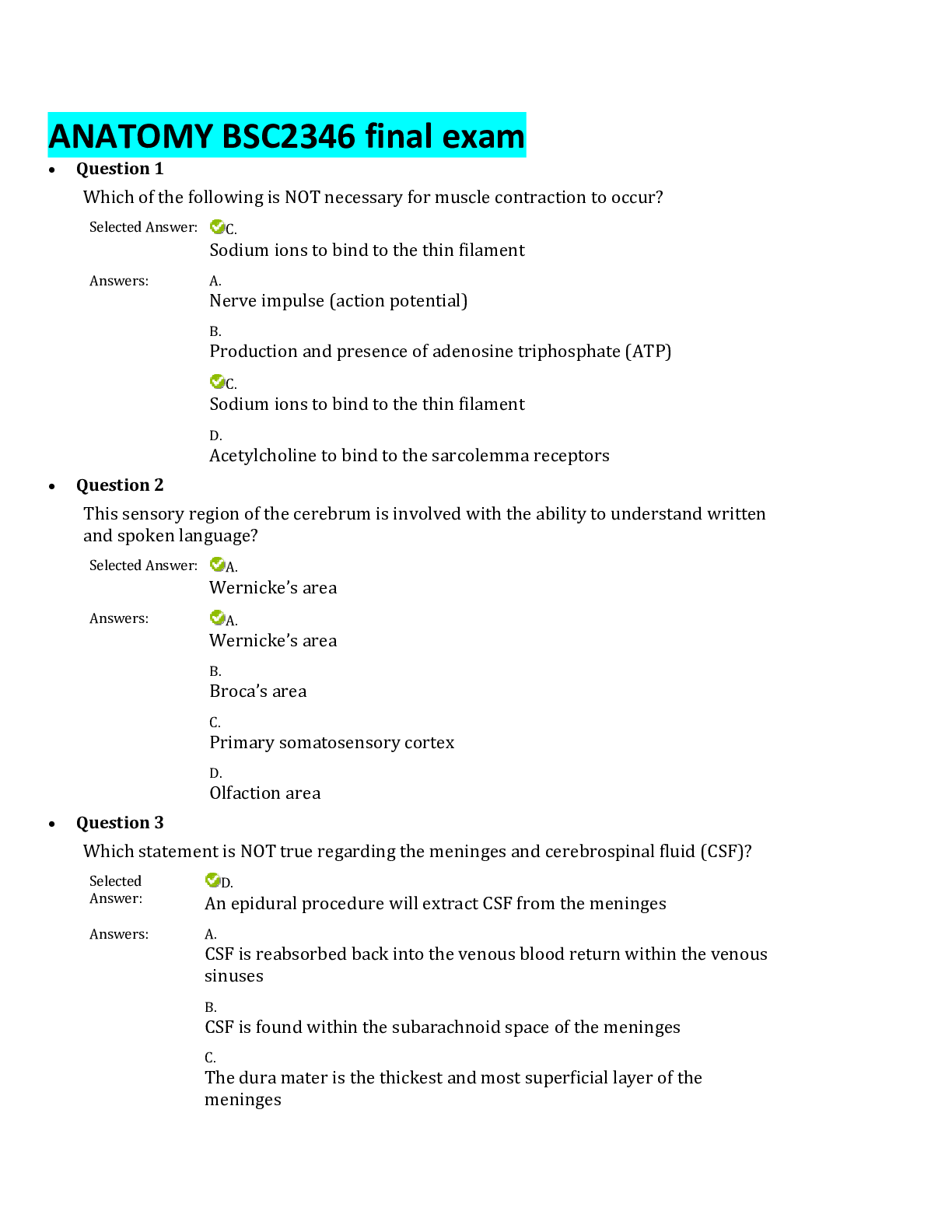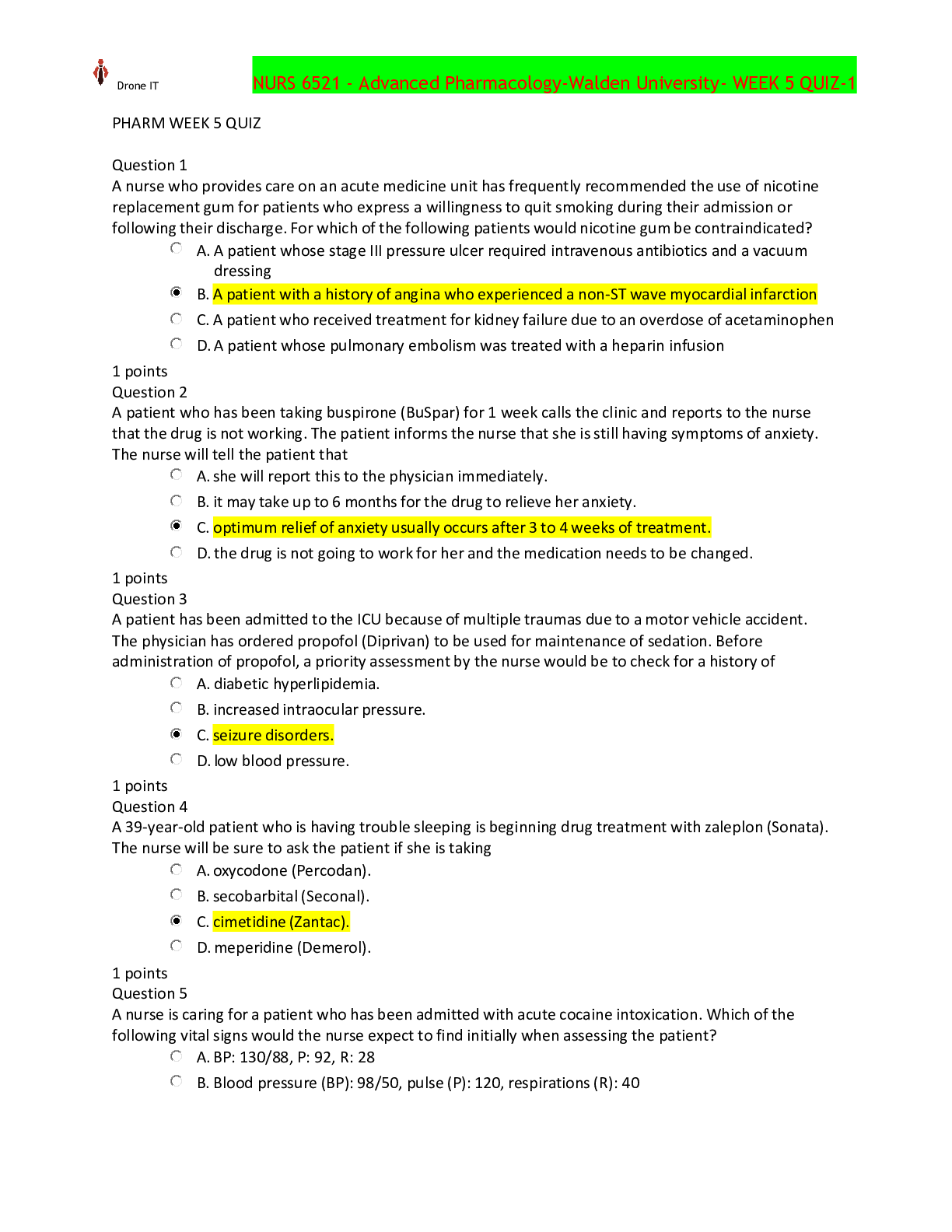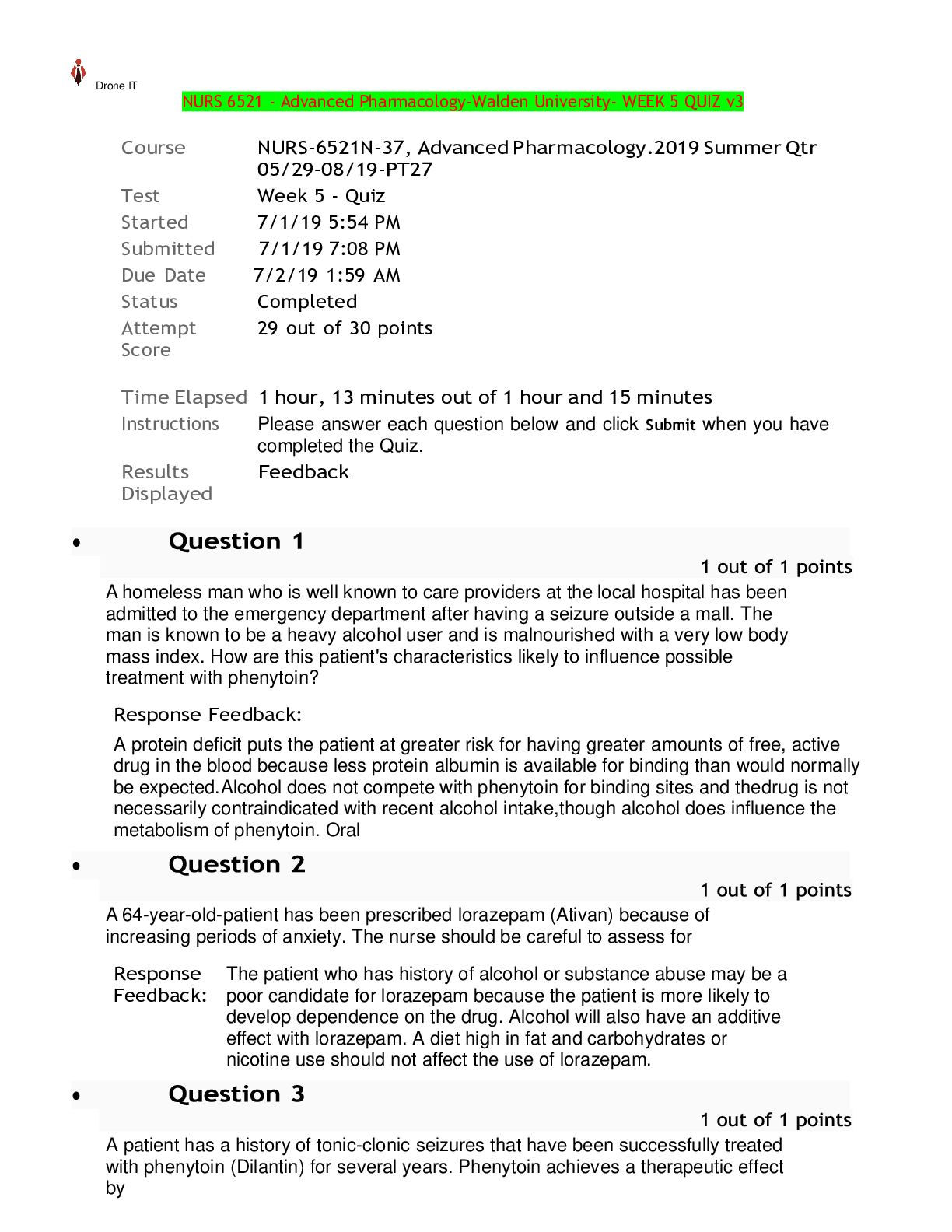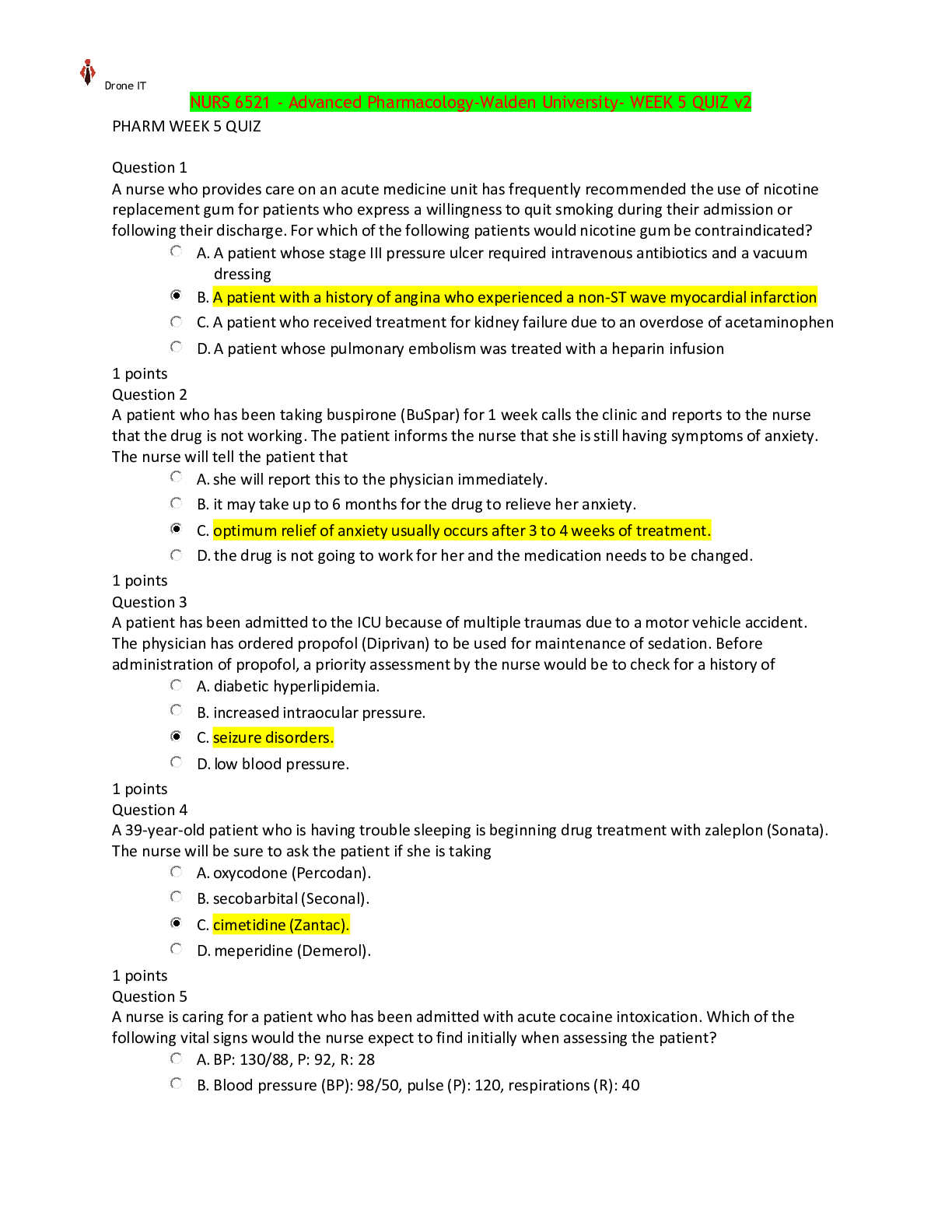Cardiology > EXAM > SOLVED- ELABORATED-American Heart Association-Advanced Cardiovascular Life Support ACLS Written Exam (All)
SOLVED- ELABORATED-American Heart Association-Advanced Cardiovascular Life Support ACLS Written Exam-Practice Questions-2023
Document Content and Description Below
SOLVED- ELABORATED-American Heart Association-Advanced Cardiovascular Life Support ACLS Written Exam-Practice Questions-2023American Heart Association-Advanced Cardiovascular Life Support ACLS Written... Exam-Practice Questions-2023 1. You find an unresponsive pt. who is not breathing. After activating the emergency response system, you determine there is no pulse. What is your next action? - Ans| >> Start chest compressions of at least 100 per min. 2. You are evaluating a 58-year-old man with chest pain. The blood pressure is 92/50 mm Hg, the heart rate is 92/min, the nonlabored respiratory rate is 14 breaths/min, and the pulse oximetry reading is 97%. What assessment step is most important now? - Ans| >> Obtaining a 12 lead ECG. 3. What is the preferred method of access for epi administration during cardiac arrest in most pts? - Ans| >> Peripheral IV 4. An AED does not promptly analyze a rythm. What is your next step? - Ans| >> Begin chest compressions. 5. You have completed 2 minutes of CPR. The ECG monitor displays the lead II rhythm below, and the patient has no pulse. Another member of your team resumes chest compressions, and an IV is in place. What management step is your next priority? - Ans| >> Administer 1mg of epinephrine 6. During a pause in CPR, you see this lead II ECG rhythm on the monitor. The patient has no pulse. What is the next action? - Ans| >> Resume compressions 7. What is a common but sometimes fatal mistake in cardiac arrest management? - Ans| >> Prolonged interruptions in chest compressions. 8. Which action is a componant of high-quality chest comressions? - Ans| >> Allowing complete chest recoil 9. Which action increases the chance of successful conversion of ventricular fibrillation? - Ans| >> Providing quality compressions immediately before a defibrillation attempt. 10. Which situation BEST describes pulseless electrical activity? - Ans| >> Sinus rythm without a pulse 11. What is the BEST strategy for performing high-quality CPR on a patient with an advanced airway in place? - Ans| >> Provide continuous chest compressions without pauses and 10 ventilations per minute. 12. Three minutes after witnessing a cardiac arrest, one member of your team inserts an endotracheal tube while another performs continuous chest compressions. During subsequent ventilation, you notice the presence of a waveform on the capnography screen and a PETCO2 level of 8 mm Hg. What is the significance of this finding? - Ans| >> Chest compressions may not be effective. 13. The use of quantitative capnography in intubated patients - Ans| >> allows for monitoring of CPR quality. 14. For the past 25 minutes, an EMS crew has attempted resuscitation of a patient who originally presented in ventricular fibrillation. After the first shock, the ECG screen displayed asystole, which has persisted despite 2 doses of epinephrine, a fluid bolus, and high-quality CPR. What is your next treatment? - Ans| >> Consider terminating resuscitive efforts after consulting medical control. 15. Which is a safe and effective practice within the defibrillation sequence? - Ans| >> Be sure oxygen is not blowing over the patient's chest during the shock. [Show More]
Last updated: 2 years ago
Preview 1 out of 11 pages

Buy this document to get the full access instantly
Instant Download Access after purchase
Buy NowInstant download
We Accept:

Reviews( 0 )
$14.50
Can't find what you want? Try our AI powered Search
Document information
Connected school, study & course
About the document
Uploaded On
May 11, 2023
Number of pages
11
Written in
Additional information
This document has been written for:
Uploaded
May 11, 2023
Downloads
0
Views
94

